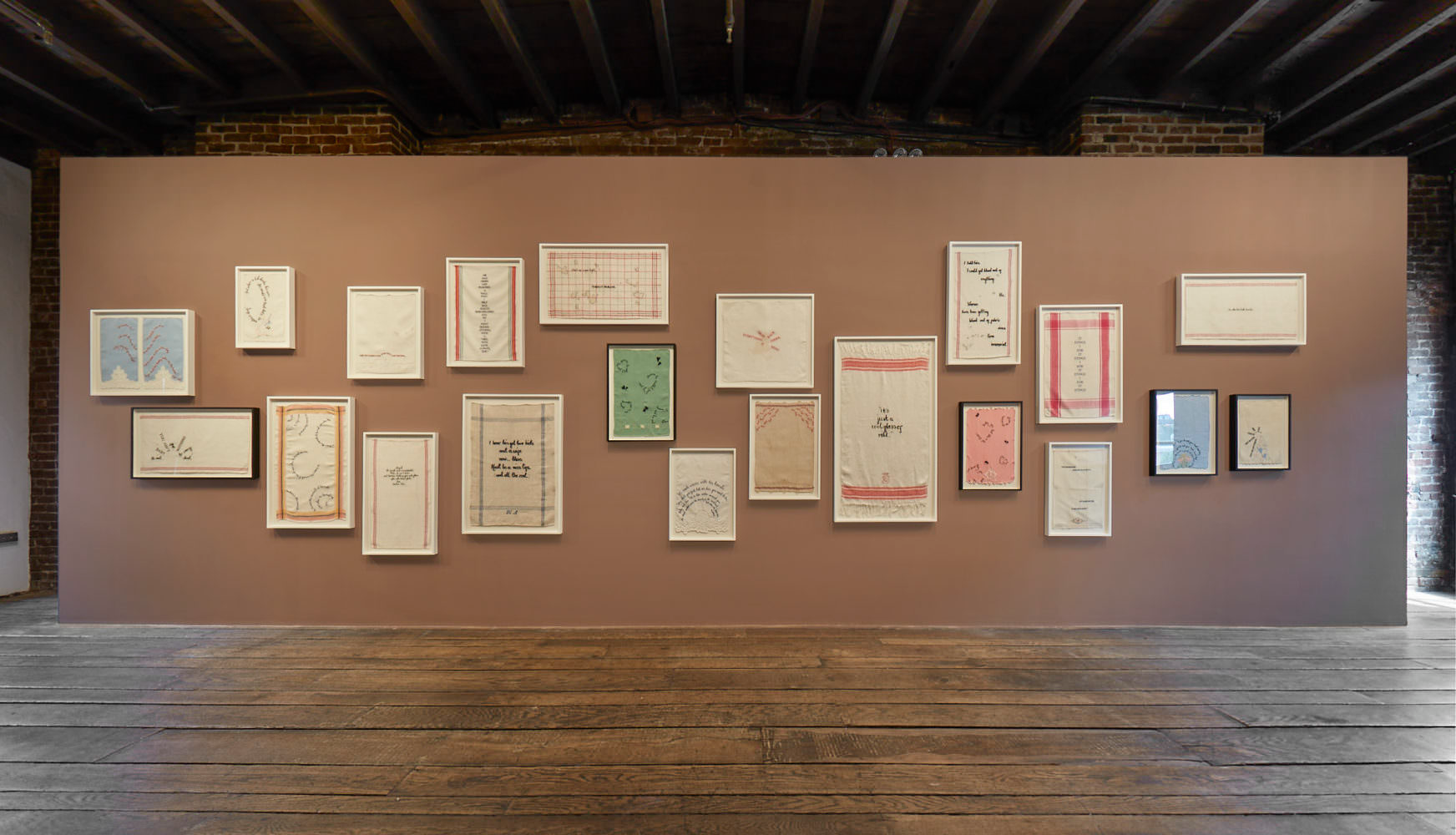Zoe Buckman is a multidisciplinary artist known for her work addressing themes of feminism, gender equality, and social justice. Through sculpture, embroidery, photography, and installation art, she examines power dynamics, reproductive rights, and the treatment of women in society. Born in London and based in New York, Buckman’s unique approach blends personal narratives with larger socio-political issues, making her a significant figure in contemporary feminist art.
Her ability to merge aesthetics with activism has earned her international recognition. By using traditionally feminine crafts like embroidery and textiles, she challenges stereotypes and patriarchal systems that continue to shape cultural narratives. Buckman’s work resonates with women from all walks of life, as it reflects universal struggles of gender-based violence, inequality, and the fight for reproductive rights.
The Artistic Journey of Zoe Buckman
Zoe Buckman’s journey into the art world began with photography before she expanded into other media. Her early works were deeply personal, capturing the complexities of womanhood and identity. However, as her practice evolved, she began incorporating mixed media elements, including textiles and found objects, to deepen her commentary on gender and social justice.
One of Buckman’s defining characteristics as an artist is her willingness to experiment with new forms and techniques. While her earlier works focused on imagery and documentation, she later transitioned to installations that engage audiences on a more immersive level. By blending personal experiences with broader feminist themes, she successfully makes politics deeply personal.
Throughout her career, Buckman has collaborated with other artists, activists, and organizations that align with her vision. These partnerships have further strengthened her commitment to using art as a tool for social change.
Themes in Zoe Buckman’s Work
Buckman’s art is deeply rooted in feminist discourse, examining power structures, gender identity, and cultural expectations placed on women. Her work often juxtaposes delicate materials with strong political statements, creating a striking contrast that forces viewers to question societal norms.
Some of the core themes in Buckman’s work include:
- The Female Body and Reproductive Rights: Buckman frequently explores issues related to bodily autonomy, contraception, and abortion rights. By using feminine materials such as lingerie and floral embroidery, she highlights the vulnerability of women while celebrating their resilience.
- Gender-Based Violence and Misogyny: Many of her works tackle the topic of violence against women, addressing domestic abuse, sexual harassment, and the ways in which misogyny is ingrained in cultural systems.
- Femininity and Strength: Buckman’s use of delicate, handcrafted elements in her work serves as a commentary on traditional gender roles. She challenges the notion that femininity equates to weakness by infusing her work with powerful, bold messages.
- Cultural Perceptions of Women: Her work critiques the way women are represented in popular culture, particularly in music, film, and advertising. She examines how these portrayals shape societal attitudes toward women.
- Intersectionality: Buckman acknowledges the different experiences women face based on race, class, and background. Her work highlights the importance of addressing multiple layers of oppression within feminist discourse.
Notable Works by Zoe Buckman
One of Buckman’s most well-known projects, Every Curve, features vintage lingerie embroidered with rap lyrics that reference women in both empowering and degrading ways. This series examines the contradictions in how society perceives and treats women, critiquing misogyny in pop culture while celebrating femininity and resilience. By repurposing undergarments as canvases for social commentary, Buckman highlights the tension between vulnerability and strength.
Another significant project, Champ, features a series of boxing gloves adorned with delicate floral embroidery. This series is a powerful metaphor for female strength and resistance, illustrating how women navigate struggles while maintaining grace and resilience. The boxing gloves serve as symbols of both empowerment and vulnerability, reflecting the daily battles women face in a patriarchal world.
Buckman has also worked on public installations that amplify feminist messages beyond gallery spaces. These works engage audiences in new and dynamic ways, inviting participation and discourse around gender-based issues.
Feminism and Activism Through Art
Zoe Buckman’s work is deeply rooted in activism. She uses her platform to raise awareness about gender-based violence, reproductive rights, and the need for systemic change. Her exhibitions often serve as gathering spaces for discussions on feminism and social justice, encouraging audiences to reflect on their roles in the fight for equality.
She actively collaborates with organizations that support women’s rights and gender justice. By merging art with activism, Buckman ensures that her work goes beyond aesthetics—it becomes a call to action. Her art challenges audiences to think critically, fostering important conversations that lead to progressive change.
Exhibitions and Recognition
Buckman’s work has been exhibited in major galleries and museums worldwide, including the Museum of Arts and Design in New York and The Democratic National Convention. Her installations have received critical acclaim for their emotional depth and cultural relevance. She has been featured in numerous art publications and continues to be recognized as a leading voice in contemporary feminist art.
As her influence grows, Buckman remains committed to pushing boundaries and expanding the conversation around gender and power. Her ability to merge personal narratives with broader societal issues has solidified her place as a pioneering artist in the fight for gender equality.
FAQs
What is Zoe Buckman known for? Zoe Buckman is known for her feminist-themed artwork that explores gender equality, women’s rights, and societal norms. She uses mixed media, including embroidery and sculpture, to deliver powerful messages.
Where has Zoe Buckman exhibited her work? Her work has been showcased in prestigious venues such as the Museum of Arts and Design in New York, The Democratic National Convention, and various international art exhibitions.
What are some notable works by Zoe Buckman? Some of her most famous series include Every Curve, which critiques misogyny in popular culture, and Champ, which symbolizes female strength and resilience through embroidered boxing gloves.
How does Buckman combine activism with art? She collaborates with feminist organizations, creates public art installations, and uses her work to raise awareness about gender-based violence, reproductive rights, and equality.
How does Zoe Buckman’s work influence the feminist movement? Her art serves as a visual representation of feminist struggles, empowering women to challenge patriarchal structures and inspiring societal change.
Conclusion
Zoe Buckman is more than an artist—she is a powerful voice in the fight for gender equality. Through her unique approach to storytelling and activism, she challenges societal norms, addresses systemic issues, and inspires dialogue on crucial feminist topics.
Her work stands as a testament to the resilience of women, the power of art as activism, and the importance of fighting for a more equitable world. By blending traditional craft with contemporary social critique, Buckman has created a body of work that will continue to influence feminist discourse for generations to come.
As she continues to push the boundaries of contemporary art, Buckman’s impact will only grow. Her ability to merge beauty with activism ensures that her work remains relevant and powerful, serving as both a form of resistance and a beacon of hope for those fighting for a more just society.




